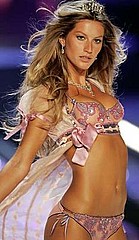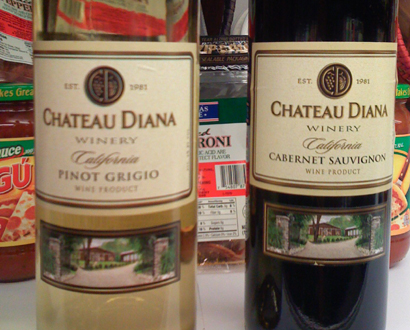Dr Vino's wine blog
wine talk that goes down easy
Does wine still merit a sin tax?
 While we were all out during the holidays, a fascinating piece by David Leonhardt about tax and wine ran in the business section of the Times. He met with Philip Cook, a Duke economist and Yellow Tail lover, who argues in his book that wine is getting a free ride from a tax perspective. The federal excise tax on wine has stayed level at $1.07 a gallon (about $0.21 a bottle, a tax that must be paid before the wine leaves the winery) since 1992. So Cook argues that we are “subsidizing” wine since the real tax rate has fallen by 33% in that time. He advocates doubling the excise tax on wine and alcohol since he says that the tax doesn’t cover the “costs” of alcohol on society. Here’s the way Leonhardt sums it up:
While we were all out during the holidays, a fascinating piece by David Leonhardt about tax and wine ran in the business section of the Times. He met with Philip Cook, a Duke economist and Yellow Tail lover, who argues in his book that wine is getting a free ride from a tax perspective. The federal excise tax on wine has stayed level at $1.07 a gallon (about $0.21 a bottle, a tax that must be paid before the wine leaves the winery) since 1992. So Cook argues that we are “subsidizing” wine since the real tax rate has fallen by 33% in that time. He advocates doubling the excise tax on wine and alcohol since he says that the tax doesn’t cover the “costs” of alcohol on society. Here’s the way Leonhardt sums it up:
And for all that is wonderful about wine, beer and liquor, they clearly bring some heavy costs. Right now, the patchwork of alcohol taxes isn’t coming close to covering those costs — the costs of drunken-driving checkpoints, of hospital bills for alcohol-related accidents and child abuse, and of the economic loss caused by death and injury. Last year, some 17,000 Americans, or almost 50 a day, died in alcohol-related car accidents. An additional 65,000 people a year die from other accidents, assaults or illnesses in which alcohol plays a major role.
Wine has ethyl alcohol in it so it contributes to these statistics. But the argument has floated around for centuries that wine is consumed differently than beer and spirits. Since at least the time of Thomas Jefferson, wine has had advocates who see wine as a drink of moderation since it is mostly consumed with food.
Further, since about 1991 when “60 Minutes” popularized the notion of the “French paradox,” there have been many studies underscoring the health benefits of wine, particularly the role of tannins. Heck, resveratrol extends life and promises fat-free gluttony!
So what do you say, does wine still deserve a sin tax? Of course, Cook does not take into account the fact that wine geeks already have been paying a “tax” called the declining dollar. Sobering indeed.
And if we’re opening the discussion of taxes and wine, there’s always the environmental cost of the wine industry in the form of greenhouse gases. A carbon tax, perhaps?
My kind of school spirit: Chateau Palmer
 How would you like to intern at a winery during harvest? OK, one of the top chateaux in Margaux? OK, now add that you are a high school student and think how cool that would be!?!?
How would you like to intern at a winery during harvest? OK, one of the top chateaux in Margaux? OK, now add that you are a high school student and think how cool that would be!?!?
Following our discussion of kids at wineries, I was delighted to learn that Chateau Palmer has an open view on the subject–at least for teenagers. Bernard de Laage explained to me in New York recently that Danish high school students have been coming to the chateau to help with harvest since 1997. Danish students have to do a work-study and some clever teacher there dreamed up the idea of bringing them down by bus for a month. Um, how come no teacher at my high school ever had this brilliant idea?
Bernard told me that the students are great workers for at least two reasons. First, “they have no bad habits.” He was speaking to their harvesting abilities, of course. Because they have done no previous vineyard work, they “do exactly what we say,” Bernard told me. Second, he said that “we can rely on them–they’re here every day.” Local workers for hire, by contrast, are available some days, but not others as they scramble to help across many vineyards.
It seems like a jolly time judging by the tiny photos on the Chateau Palmer blog. I wonder what they drank at meal time? My guess is not rum and coke.
Now is the time for California cheap wine–will producers drop the ball again?
 Gisele Bundchen doesn’t want our dollar any more. Jay-Z flashes a wad of 500 euro notes in his latest video. Jim Rogers, former parter of financier George Soros, is selling his house and all assets in the US dollar and moving to Asia.
Gisele Bundchen doesn’t want our dollar any more. Jay-Z flashes a wad of 500 euro notes in his latest video. Jim Rogers, former parter of financier George Soros, is selling his house and all assets in the US dollar and moving to Asia.
I was stuck on a local subway yesterday when I should have been on the express. That gave me time to flip all the way to page C14 of the WSJ and read the currency table and see what’s got Gisele, Jay-Z, and Rogers running for the hills. Not a pretty picture. The greenback is down across the board: -10% against the euro YTD, -12% against the australian dollar, -7.6% against the kiwi dollar, and even -4.7 against the Chilean peso. (Trivia: which significant wine producing country has the dollar actually appreciated against this year?) Elsewhere I read that the euro has appreciated by 50% since 2002 against the dollar.
Thanks to our dollar looking like the currency of a banana republic, imported wines are getting more expensive. Who stands to gain? Why, producers in America since we’re in the same, downtrodden currency zone together.
Paging California! Will you please answer the white courtesy phone? This is your moment to shine. Start making interesting wine under $10. Imported wine often has to go through one more tier (the importer) than your wine so there’s a built-in cost advantage. Now with the declining dollar, that gap widens.
Imported wine has grown to account for almost a third of all wine in America, up from only 13% in 1990. The Silicon Valley Bank ripped California a new one in a report last spring as they stared in awe at the whirling vortex of Yellow Tail, pinot grigio, and Chilean cab: “Are American vintners starting to look like Detroit in the 70’s, when gas prices soared and automakers kept putting out big gas guzzlers?”
But their same report this year suggested an American market of strengthening demand and short domestic supply. They predicted foreign wineries to fill the gap. But at some point in the dollar’s decline, the importers and the producers will stop sharing the pain and pass it on to the consumer in the form of higher prices. I talked with Bill Deutsch, importer of Yellow Tail, a few years ago and know that he is a savvy currency hedger. But with hedging, you can run for a while but you can’t hide forever.
Sadly, rising prices for foreign wines just means less competition for California. And as we wine consumers know all too well, a lack of competition too often means a rise in prices or a decline in quality. That would be a sad direction for them to go.
Hit the comments if you have had a stand-out wine under $10 from California (or elsewhere in the US). Not that Gisele and Jay-Z are interested. But some of the rest of us in this currency zone are.
(Image: victoriassecret.com)
Who’s your god-daddy? Hanna Agostini, Robert Parker and the question of influence
 Alain Raynaud, owner of Parker-fave Chateau Quinault L’Enclos, asked Robert Parker to be the godfather of his child. Parker told Elin McCoy in Emperor of Wine “he didn’t see how he could refuse.” Why is the world’s leading wine critic on such close terms with the people whose products he says he independently evaluates? Or, as the saying goes, who’s your daddy?
Alain Raynaud, owner of Parker-fave Chateau Quinault L’Enclos, asked Robert Parker to be the godfather of his child. Parker told Elin McCoy in Emperor of Wine “he didn’t see how he could refuse.” Why is the world’s leading wine critic on such close terms with the people whose products he says he independently evaluates? Or, as the saying goes, who’s your daddy?
These questions and more will be publicly aired with a new tell-all book from his former assistant in Bordeaux, Hanna Agostini. Agostini helped Parker with translations from 1995 – 2003 and controlled his calendar while he was in the region, often twice a year. Late in her tenure with Parker, she became embroiled with scandal of influence peddling, trying to cash in on her control of Parker’s schedule and sending out invoices for her consulting on his letterhead. After standing by her for a time, he let her go.
Now she’s fighting back with her own book, Robert Parker: Anatomie d’un Mythe, just published in France (and just purchased via amazon.fr by Dr. Vino). While she has respect for his palate, she accuses Parker of recycling his tasting notes, pokes fun at his prose, and even evaluating wines in print that he hasn’t even tasted. Here’s an excerpt from her interview with the Bordeaux paper, Sud-Ouest (link to cache; my translation):
In bringing up his relations with the winemaker Michel Rolland, and the négociants Archibald Johnston, Jeffrey Davies, Bill Blatch and Dominique Renard, his friendship with Jean-Bernard Delmas, the former head of grand cru haut Brion and the Moueix family, I’m not saying anything that’s not already widely known…I only want to show that there’s a yawning gap between his rhetoric and his actions.
The situation does raise the larger question of how close should a journalist be with his or her subjects? On the one hand, distance maintains journalistic independence. On the other hand, proximity and access make for a more nuanced understanding of what’s at stake and the players involved. Oh wait! Parker doesn’t even claim to be a journalist, but a critic–THE critic–so there’s no scoop for him to get. Just wines and tannic barrel samples, by the hundreds.
And, by the way, Alain Raynaud tried to block the book’s publication because he says Parker is not godfather to his daughter. A court in the region ruled against him last week.
Talking Champagne with Peter Liem of Wine & Spirits
 Is the world running out of Champagne? Such is what a panicked headline in the Guardian implied recently.
Is the world running out of Champagne? Such is what a panicked headline in the Guardian implied recently.
Indeed, Champagne is the most effervescent region in France, a winemaking country where practically every other region is affected by la crise viticole. Peter Liem, Senior Correspondent for Wine & Spirits magazine, is so interested in Champagne that he left New York earlier this year to move there. I caught up with him via email about what’s happening on the ground. He talks in detail about the effects of the phenomenal demand for Champagne and offers his picks for reasonably priced bubbly here in the States–as well as ones only available in France. Read more…
Poll: ads versus subscription models for wine web sites

This week the New York Times ended their experiment with a pay subscription barrier on selected content (“Times Select”)–yay, free content for all! Subscriptions had made the company $10 million a year but the thinking is that by making the “premium” content free to readers, the uptick in page views and associated advertising revenues will offset the loss of subscriptions. Even the Wall Street Journal, seen as the most successful online newspaper with $65 million in subscription revenue, is talking about giving out the content for free under the forthcoming Murdoch regime.
Some wine sites put their content behind subscription barriers, notably eRobertParker.com, WineSpectator.com, and JancisRobinson.com. The Wine Spectator also hits readers with ads after they have already paid, as did Times Select for that matter.
Are there enough ads out there to support wine sites? Should subscription-based wine sites go free? Have your say in the poll and the comments below.

poll now closed
(image)
Fred Franzia, blind tastings, fifty kids, gringo vino – Sipped and spit
 SIPPED: Freddy boy
SIPPED: Freddy boy
If there were no Fred Franzia, would journalists have to invent him? In this story, the man behind Two Buck Chuck swears, slams all wine over $10 a bottle, mocks the concept of terroir, and relieves himself near his car–all in the first paragraph! Business 2.0 lapped it up talking about his “wars” and why he has an Enya CD in his Jeep. [Business 2.0, now defunct]
SPIT: Blind tastings
Eric Asimov writes “maybe as wine drinkers we’re all a little more grown up now and don’t need to taste blind all the time.” Indeed! Three cheers wine evaluation without numbers! [The Pour]
SIPPED: Gringo vino
Are Americans finally heading to Argentina to make wine? Fortune Small Business found a few. I hope they read my article from January about the pitfalls! [Fortune SB]
SIPPED: Bambino vino
Gabriella writes up her experience taking 55 elementary school kids on a winery tour in Spain. Could this ever take place if it were in America? [Catavino]
SIPPED: green wine
Whole Foods rolls out an “organically grown” wine in a tetra prisma! [Seattle dbusiness]
SIPPED: merlot
The grape, spit in Sideways, will get it’s own defense on the silver screen with a new documentary. Key question: will anyone notice?
SPIT: The greenback
The US dollar falls to 15 year lows. Say hello to more expensive imported wine–and wine travel overseas!
(Photo credit: Fair use is made here of a reduced-size crop from a larger image in Business 2.0 attributed to Michael Kelley)




